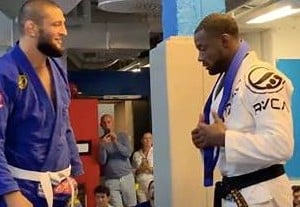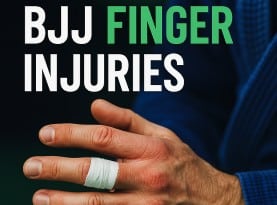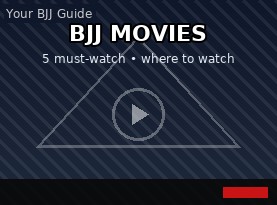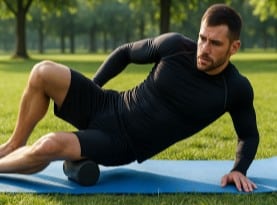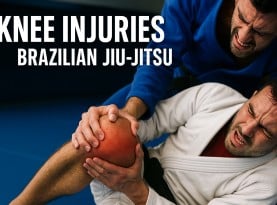Why Is It Important to Warm Up? A Practical, Science-Backed Guide (with Real-World Cues)
Most people “know” they should warm up—but not why. When you understand what’s happening inside your body, it’s easier to do the right things (and skip the time-wasters). This guide explains the physiology in plain English, how warming up reduces injury risk, how long to spend, and how to tell—objectively—that you’re ready. I’ll use a few Brazilian Jiu-Jitsu examples where helpful, but the advice applies to any sport or workout.
What a Warm-Up Actually Does (Under the Hood)
1) Raises muscle and core temperature
A small rise in muscle temperature (~1 °C) improves how your muscle fibers cycle and how quickly energy reactions run. The result: movements feel smoother, power comes on sooner, and you need less effort to produce the same output.
2) Primes your nervous system
Warm-ups speed nerve conduction and “wake up” motor units. You’ll feel this as quicker reactions and better coordination—whether that’s a first sprint, a heavy set, or the opening scramble in BJJ.
3) Ramps heart, lungs, and oxygen delivery
Gradually elevating heart rate and breathing reduces the “shock” of the first hard effort. Oxygen delivery catches up faster, so you avoid that early-session gasp.
4) Lubricates joints and prepares connective tissue
Moving through ranges of motion circulates synovial fluid (your joints’ natural lube) and gets tendons/ligaments behaving more elastically. That means fewer “cold” twinges during quick changes of direction or end-range positions.
5) Sets your brain state
A short, intentional warm-up narrows your focus and nudges you into a performance mindset—useful before any complex task (heavy lifts, ball sports, grappling, or even a tempo run).
Does Warming Up Help Prevent Injuries?
Warm-ups don’t make you bulletproof, but across many sports, structured neuromuscular warm-ups reduce soft-tissue and joint injuries—especially around knees, ankles, and shoulders. Warming up improves control, stiffness modulation, and landing/cutting mechanics. In contact or grappling sports, showing up “cold” raises the odds of tweaks when you get yanked into an unfamiliar angle.
How Long Should You Warm Up?
Shorter than you think—about 8–15 minutes for most people:
- Cool room / morning / you feel stiff: drift toward the longer end.
- Warm room / afternoon / you’re already active: the shorter end is fine.
- High-intensity day (sprints, max lifts, hard rolls): include a few brief, snappy efforts after you’re warm.
- Gap before the main work (coach talks, partner changes): add a 30–60 second re-warm to keep the benefits.
How to Know You’re Warm Enough (Simple, Objective Cues)
Use these four checks instead of guessing:
- Breath: Your breathing is slightly elevated, but you could still hold a conversation.
- Light sweat: A mild sheen on forehead/upper lip—even in a cool room.
- Movement quality: End-range motions feel smooth, not “sticky.” First few skill reps feel coordinated. (In BJJ: pummeling or technical stand-ups feel crisp; in running: strides feel springy; in lifting: empty-bar sets feel snappy.)
- Power pop: 2–3 short, fast efforts (e.g., a 3–5 second acceleration, a few quick jumps, an explosive hip-hinge) feel powerful without a big breath penalty.
If you hit those markers, you’re ready. If not, add 1–2 minutes of gentle movement and retest.
What a Good Warm-Up Looks Like (Without a Boring Checklist)
Think in three phases—you can fill these with movements you like:
- Raise: 3–6 minutes of rhythmic, whole-body motion to lift temperature and heart rate.
- Mobilize & Activate: 3–6 minutes of controlled ranges and muscle activation in the patterns you’ll use (hips/ankles for running; shoulders/upper back for pressing or swimming; hips/torso/shoulders for grappling).
- Potentiate (Optional but valuable): 2–4 very short, snappy actions that resemble the session’s hardest demand (e.g., brief accelerations, 2–3 crisp jumps, a fast but submaximal drill). Stop while you still feel fresh.
Rule of thumb: End your warm-up feeling ready, not tired. If your first work set or first round feels worse than your last warm-up rep, you did too much.
Common Warm-Up Mistakes (and Easy Fixes)
- Mistake: Turning the warm-up into a workout.
Fix: Keep the total under ~15 minutes; finish with “I could do more,” not “I need a break.” - Mistake: Long static stretching before intense work.
Fix: Save deep, long holds for after training or separate mobility sessions. Before training, use controlled, dynamic ranges. - Mistake: Warming up once, then sitting around.
Fix: If there’s a 10–20 minute gap before the main session, do a 30–60 second re-warm (easy movement + 1–2 crisp actions). - Mistake: One-size-fits-all routine.
Fix: Adjust for your sport, your body, and the day. Have a 5-minute “express” version and a 12–15 minute “full” version.
Special Situations
- Older athletes / returning from injury: Take the longer end (12–15 minutes), emphasize controlled ranges and activation, and be conservative with the “potentiate” phase.
- Morning sessions: Expect stiffer joints and slower oxygen kinetics—add a minute or two to each phase.
- Cold environments: Keep layers on during the Raise/Mobilize phases; re-warm between long breaks.
- High-skill sessions (Olympic lifts, gymnastics, BJJ): Include 1–2 minutes of skill-specific patterning at low intensity once you’re warm.
Quick Examples (to make it concrete)
- Runner: 5 min easy jog → dynamic leg & hip series → 3 × 20–30 m strides at ~80–90%.
- Lifter: 4 min light cyclical work → shoulder/hip T-spine/ankle control → 2–3 fast empty-bar sets or a few medicine-ball throws.
- Grappler (BJJ): 4–5 min easy movement → joint control for hips/shoulders/neck → 2–3 crisp but short exchanges of a favorite entry/sweep (stop before fatigue).
Best Way to Cool Down After Your Session
Cool-downs are less magical than people think, but they’re useful for bringing your system down smoothly and spotting small issues before they become big ones.
- 2–5 minutes easy movement (walk, cycle, slow shadow work).
- Breathing: 2–3 minutes nasal-dominant, slow exhales (e.g., 4 seconds in, 6–8 out) to shift you from “go” to “recover.”
- Short static stretches or positions for any areas that feel restricted.
- Hydrate + protein within a normal meal window.
- Optional tools (cold/heat, massage guns) can be used based on preference and training phase—but they’re not mandatory after every session.
TL;DR
- Why warm up? To raise tissue temperature, prime the nervous system, ramp oxygen delivery, improve joint mechanics, and set your head right.
- How long? 8–15 minutes, adjusted to room temp, time of day, and session intensity.
- Ready check: Slight sweat, steady but conversational breath, smooth end-ranges, and a couple of crisp efforts that feel powerful—not tiring.
- Don’t overdo it. Finish fresh, not fatigued.
Related reading on your site
- Principles-first coaching in grappling: John Danaher
- How elite athletes turn principles into pressure: Gordon Ryan
This article is informational and not medical advice. If you have pain, injury, or a health condition, consult a qualified clinician before changing your training.
